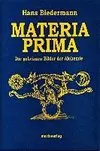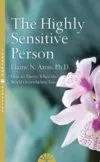
-
 Anglický jazyk
Anglický jazyk
Factors supporting growth of Raphanus sativus cv. newar in India
Autor: Preeti Singh
Raphanus sativus is native to Western India; it is annual herb, 20-100 cm long, with a rosette of lyrate, pinnatified leaves arising from a short stem. There are five main varieties of radishes. All the species of Raphanus including R. sativus have 2n=18... Viac o knihe
Na objednávku
66.60 €
bežná cena: 74.00 €
O knihe
Raphanus sativus is native to Western India; it is annual herb, 20-100 cm long, with a rosette of lyrate, pinnatified leaves arising from a short stem. There are five main varieties of radishes. All the species of Raphanus including R. sativus have 2n=18 chromosome. The commercial type of radish is said to be largely self - incompatible The main enzymes found in radish are phosphatase, catalase, sucrase, amylase, alcohol dehydrogenase and pyruvic carboxylase. Radish leaves are rich source of calcium, iron and ascorbic acid. It serves as a very good source of calcium when consumed with rice. Phytin found is rice helps in calcification. Radish is good source of ascorbic acid (15-40 mg/100g) and supplies a variety of mineral salts. Trace elements in radish include aluminum, barium, lithium, manganese, silicon, titanium, fluorine and iodine (up to 18 µg/100g). The seeds of radish contain glycosidically bound mustard oils in which allyl, methyl and isopropyl - isothiocyanates and sulphoraphene are identified from various varieties; 4 - methyl sulfenyl -3- butenyl cyanide, the corresponding nitrile of suplhoraphene and cleavage product of its glucoside have been also isolated.
- Vydavateľstvo: LAP LAMBERT Academic Publishing
- Rok vydania: 2013
- Formát: Paperback
- Rozmer: 220 x 150 mm
- Jazyk: Anglický jazyk
- ISBN: 9783659397028

 Nemecký jazyk
Nemecký jazyk 










